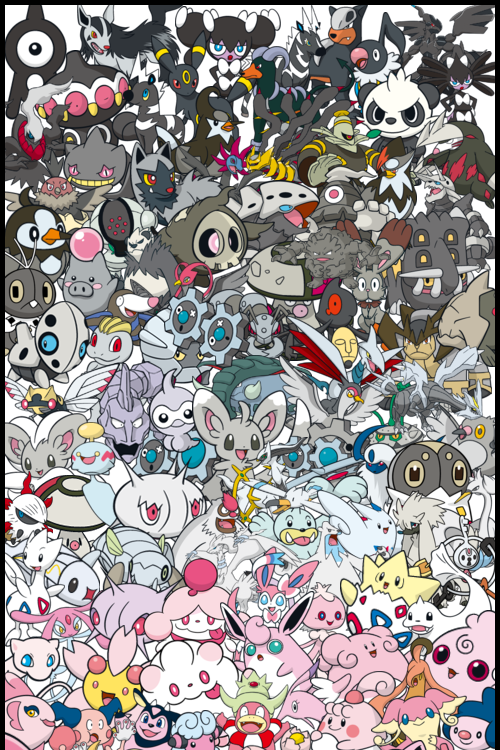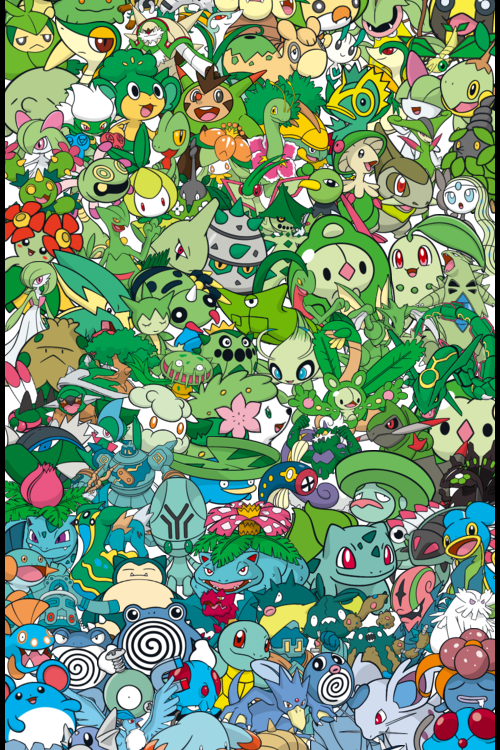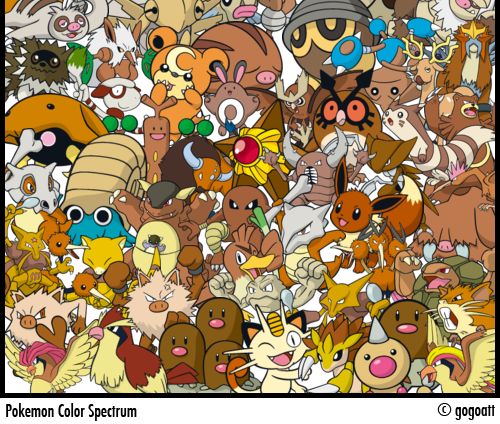Iphleandro-blog - Real

More Posts from Iphleandro-blog and Others
![Horseshoe Bend, AZ. Watched The Sunset And It Was Everything I Could Have Hoped For On A Roadtrip. [6000x4000][OC]](https://64.media.tumblr.com/0a7bcfbc770eb8d36e6a78a2a8f8e5b6/tumblr_pgd94l9XWB1xvdgkco1_500.jpg)
Horseshoe Bend, AZ. Watched the sunset and it was everything I could have hoped for on a roadtrip. [6000x4000][OC] https://ift.tt/2Ppvm1A
Hey Tumblr! I found an awesome travel contest that I want to share with my followers. Travel for free to France, The Netherlands, Switzerland, or Serbia. Just click here and read my blog for more details!
From @park_kkone: “Benny and Berry❤️ Father and daughter👨👧💕#fatherslove . 베니와 베리❤️ 아빠와 딸👨👧 #딸바보 베니💕” #catsofinstagram [source: https://ift.tt/2NbX0xg ]








Pokemon Spectrum | by gogoatt
Here is a semester project in the 2012 Mechatronic control systems engineering module at San Jose State University. This is a Proportional-Integral-Derivative controlled (PID), 6 degree of freedom (6-DOF) Stewart platform, which basically means it has six axes on the top plate. This prototype uses 6 radio controlled servo motors instead of the traditional use of hydraulic jacks or electronic actuators. (this video has sound)
Proportional-Integral-Derivative:
A PID controller continuously calculates an error value as the difference between a measured process variable and a desired setpoint. The controller attempts to minimize the error over time by adjustment of a control variable, such as the position of a set of servo motors or actuators, to a new value, given by a weighted sum:

where Kp ,Ki , and Kd, all non-negative, denote the coefficients for the proportional, integral, and derivative terms, respectively (sometimes denoted P, I, and D).
P accounts for present values of the error , and is determined by the direction and magnitude the correction needs to be applied (e.g. if the error is large and positive, the control variable will be large and negative),
I accounts for past values of the error (e.g. if the output is not sufficient to reduce the size of the error, the control variable will accumulate over time, causing the controller to apply a stronger action through P), and
D accounts for possible future values of the error, based on its current rate of change. This part determines when and at what rate it needs to reduce the magnitude of its action, e.g as the ball fast approaches the desired set point at the centre of the plate.
[source]
“Gödel’s incompleteness theorems argue that the truth of some mathematical systems are unknowable. Alan Turing extended that idea to computers, showing that there are some algorithms for which it is impossible to know whether a computer can complete the calculations for in a finite amount of time. Now, a team of physicists believe they have extended the concept even further to the physical realm. In a finite 2D crystal lattice of atoms it is known that it is possible to calculate in a finite time the “spectral gap"—the amount of energy between the lowest energy level of the electrons in a material and the next one up. In the new work, Toby Cubitt of University College London and his colleagues appear to have shown that in an infinite 2D lattice the calculation of the spectral gap it is impossible to know if the calculation ends. If true, that means that even if the spectral gap is known for a finite-size lattice, the value could change abruptly with just the addition of a single atom and it is impossible to know when it will do so.” - Physics Today

( Kurt Gödel (left) demonstrated that some mathematical statements are undecidable; Alan Turing (right) connected that proof to unresolvable algorithms in computer science. )
Article by Nature: Paradox at the heart of mathematics makes physics problem unanswerable

A short note on how to interpret Fourier Series animations
When one searches for Fourier series animations online, these amazing gifs are what they stumble upon.
They are absolutely remarkable to look at. But what are the circles actually doing here?
Vector Addition
Your objective is to represent a square wave by combining many sine waves. As you know, the trajectory traced by a particle moving along a circle is a sinusoid:

This kind of looks like a square wave but we can do better by adding another harmonic.

We note that the position of the particle in the two harmonics can be represented as a vector that constantly changes with time like so:

And being vector quantities, instead of representing them separately, we can add them by the rules of vector addition and represent them a single entity i.e:



Source
The trajectory traced by the resultant of these vectors gives us our waveform.
And as promised by the Fourier series, adding in more and more harmonics reduces the error in the waveform obtained.


Have a good one!
**More amazing Fourier series gifs can be found here.

Researchers design a functioning artificial womb
Researchers have designed an artificial womb-like device that could drastically change the way we care for extremely premature babies. The device, which has been used successfully with lambs, mimics the environment of a real womb. It’s designed to allow critically preterm infants to continue developing as they normally would.
Via ResearchGate
Image credit: Children’s Hospital of Philadelphia
More in Nature: An extra-uterine system to physiologically support the extreme premature lamb
Snuggly boy and his favorite toy.
Video by Marielle Tepe
Source: Science Nature Page.
-
 obscuremars99 liked this · 6 years ago
obscuremars99 liked this · 6 years ago -
 tutucthulhu liked this · 6 years ago
tutucthulhu liked this · 6 years ago -
 yourw3tsocks liked this · 6 years ago
yourw3tsocks liked this · 6 years ago -
 woodstockshmer reblogged this · 7 years ago
woodstockshmer reblogged this · 7 years ago -
 woodstockshmer liked this · 7 years ago
woodstockshmer liked this · 7 years ago -
 cobrav82-blog liked this · 7 years ago
cobrav82-blog liked this · 7 years ago -
 snowdandy liked this · 7 years ago
snowdandy liked this · 7 years ago -
 shirobk-blog liked this · 7 years ago
shirobk-blog liked this · 7 years ago -
 love4applepi liked this · 7 years ago
love4applepi liked this · 7 years ago -
 iphleandro-blog reblogged this · 7 years ago
iphleandro-blog reblogged this · 7 years ago -
 basement-dwe11er liked this · 7 years ago
basement-dwe11er liked this · 7 years ago -
 chromarin liked this · 7 years ago
chromarin liked this · 7 years ago -
 endlessham liked this · 7 years ago
endlessham liked this · 7 years ago -
 deatherino reblogged this · 7 years ago
deatherino reblogged this · 7 years ago -
 deatherino liked this · 7 years ago
deatherino liked this · 7 years ago -
 percussiongay liked this · 7 years ago
percussiongay liked this · 7 years ago -
 fryingmintbunny liked this · 7 years ago
fryingmintbunny liked this · 7 years ago -
 swordsgoblin reblogged this · 7 years ago
swordsgoblin reblogged this · 7 years ago -
 big-dick-pepsi-man liked this · 7 years ago
big-dick-pepsi-man liked this · 7 years ago -
 santa-chief liked this · 7 years ago
santa-chief liked this · 7 years ago -
 nyutamoto liked this · 7 years ago
nyutamoto liked this · 7 years ago -
 kittendrumstick liked this · 7 years ago
kittendrumstick liked this · 7 years ago -
 writingwithcatears liked this · 7 years ago
writingwithcatears liked this · 7 years ago -
 baby-skitty liked this · 7 years ago
baby-skitty liked this · 7 years ago -
 alcheumeistro reblogged this · 7 years ago
alcheumeistro reblogged this · 7 years ago -
 thebiggestboss liked this · 7 years ago
thebiggestboss liked this · 7 years ago -
 sleepgrifter liked this · 7 years ago
sleepgrifter liked this · 7 years ago -
 dishsoapdrinker reblogged this · 7 years ago
dishsoapdrinker reblogged this · 7 years ago -
 sentientbees reblogged this · 7 years ago
sentientbees reblogged this · 7 years ago -
 weiss-blake liked this · 7 years ago
weiss-blake liked this · 7 years ago -
 alksdjaslkfdalsk liked this · 7 years ago
alksdjaslkfdalsk liked this · 7 years ago -
 formalgibble-blog liked this · 7 years ago
formalgibble-blog liked this · 7 years ago -
 rileyr0123 reblogged this · 7 years ago
rileyr0123 reblogged this · 7 years ago -
 weaselthief liked this · 7 years ago
weaselthief liked this · 7 years ago -
 waddlesweetdee liked this · 7 years ago
waddlesweetdee liked this · 7 years ago -
 silenthill reblogged this · 7 years ago
silenthill reblogged this · 7 years ago -
 silenthill liked this · 7 years ago
silenthill liked this · 7 years ago -
 grimsauce liked this · 7 years ago
grimsauce liked this · 7 years ago -
 toxicitae liked this · 7 years ago
toxicitae liked this · 7 years ago